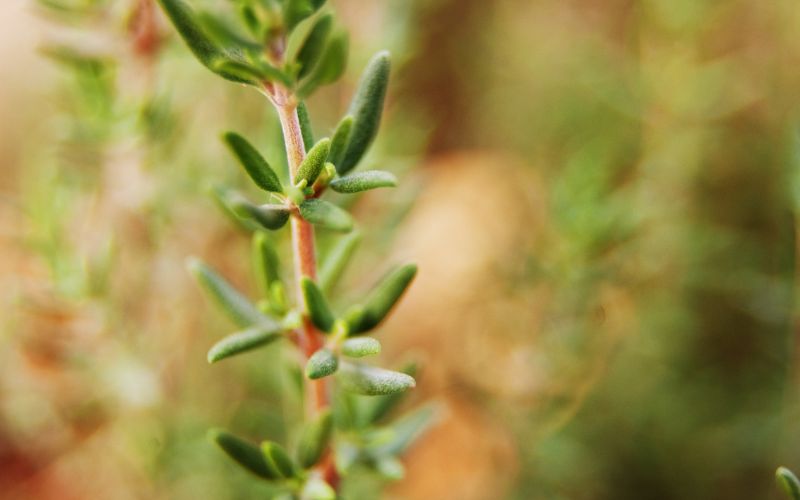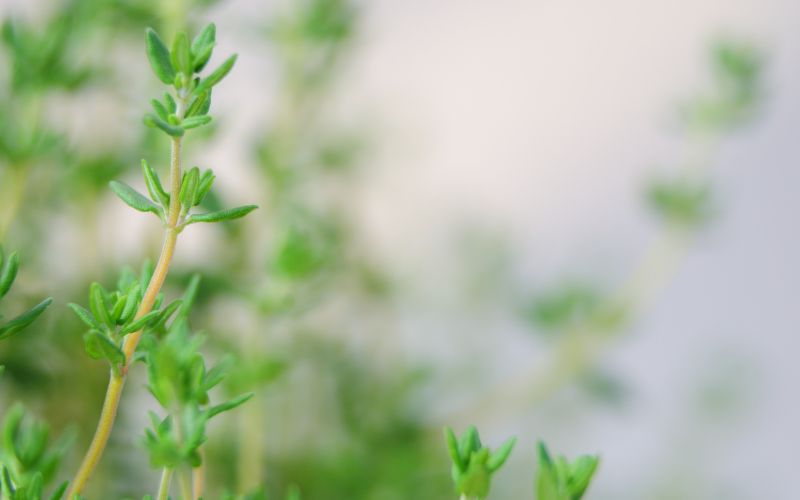German winter thyme is a low-maintenance herb that can be easily grown in your garden. This herb is a member of the mint family and has a strong, pungent flavor that is perfect for use in cooking. German winter thyme is also known as Mother of Thyme and is native to Europe.
This herb prefers full sun to partial shade and well-drained soil. It is tolerant of poor soil conditions and can even grow in rocky soil. German winter thyme is frost tolerant and will bloom from late spring through early fall. It can be propagated by seed, division, or cuttings.

German winter thyme (Thymus vulgaris ‘Narrow-Leaved’) is a hardy perennial that can be grown in colder climates.
It is an easy-to-grow herb that thrives in full sun to part shade and well-drained soil.
German winter thyme is a great choice for a border planting, or for edging walks and paths.
This herb has small, narrow leaves and delicate purple flowers that bloom from late fall through early spring.
German winter thyme can also be used for cooking purposes.
How to grow German winter thyme
To grow German winter thyme from seed, start the seeds indoors 6-8 weeks before the last frost date.
Sow the seeds on the surface of moistened potting mix and cover with a thin layer of sand. Keep the soil moist and warm until germination occurs.
Transplant the seedlings outdoors after the last frost date.
To propagate German winter thyme by division, dig up the root ball of an established plant in late fall or early spring.
Carefully divide the roots into 2-3 sections. Replant each section in a prepared bed and water well.
To take cuttings, snip off 4-6 inches of stem from a healthy plant in late spring or early summer.
Dip the cutting into rooting hormone and plant in a moistened potting mix. Keep the cutting moist and warm until roots have formed.
Transplant to a prepared bed after roots have developed.

Does German winter thyme grow back every year?
German winter thyme is a perennial herb that will come back every year.
To ensure a bountiful harvest, it is important to deadhead the flowers as they fade.
This will encourage the plant to produce more flowers.
German winter thyme can also be lightly sheared after blooming to keep the plant tidy.
What conditions does German winter thyme need to grow?
German winter thyme prefers full sun to partial shade and well-drained soil. It is tolerant of poor soil conditions and can even grow in rocky soil.
This herb is frost tolerant and will bloom from late spring through early fall.
Can German winter thyme be grown in pots?
German winter thyme can be grown in pots, as long as the pot is large enough to accommodate the root system.
It is important to choose a pot with drainage holes to prevent the roots from sitting in water.

How fast does German thyme grow?
German winter thyme is a fast-growing herb that can reach up to 12 inches in height.
What is the best way to harvest German winter thyme?
To harvest German winter thyme, snip off the leaves as needed.
The leaves can be used fresh or dried for later use.
If you are harvesting the leaves for drying, it is best to do so in the morning after the dew has evaporated.
Place the leaves on a screen or paper towel in a well-ventilated area to dry.
Once the leaves are completely dry, store them in an airtight container.
German winter thyme can also be frozen for later use.
To freeze, place the leaves in a single layer on a baking sheet and place in the freezer.
Once the leaves are frozen, transfer to a freezer-safe bag or container.
German winter thyme can be used fresh or dried in a variety of dishes. It is especially good with pork, lamb, and chicken.
It can also be used to flavor soups, stews, and sauces.
German winter thyme can also be steeped in boiling water to make a tea. This tea is said to have a calming effect and can be helpful in relieving cold symptoms.
What are the benefits of German winter thyme?
German winter thyme is a rich source of vitamins and minerals, including vitamin C, magnesium, potassium, and calcium.
It also contains thymol, an essential oil that has antibacterial and antifungal properties.
This herb can be used fresh or dried to flavor a variety of dishes.
It can also be steeped in boiling water to make a tea that is said to have a calming effect and can be helpful in relieving cold symptoms.
Final Words
German winter thyme is a versatile herb that can be used in many different dishes. It is easy to grow and can even be grown in pots.
This herb is a rich source of vitamins and minerals, and also contains thymol, an essential oil that has antibacterial and antifungal properties.
If you are looking for an herb to add flavor to your dishes or to make a soothing tea, German winter thyme may be the perfect choice for you.
Read Next
- Is It Better to Grow Herbs in a Greenhouse or Outside?
- 10 Essential Tips to Achieve a Lush and Healthy Lawn
- Discover the Beauty and Versatility of Garden Fire Pits
- Sowing the Seeds of Self-Sufficiency: A Beginner’s Guide to Edible Gardening
- Transforming Your Garden into a Wildlife Paradise: Building the Perfect Pond
- Indoor Gardening Made Easy: Get Started with Home Hydroponics










